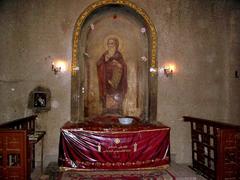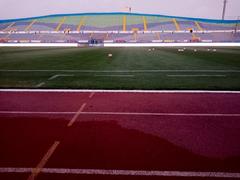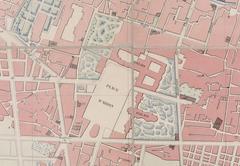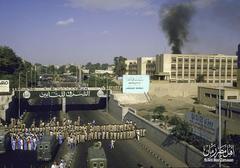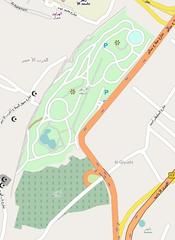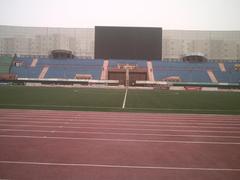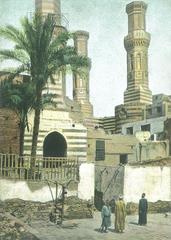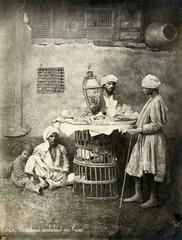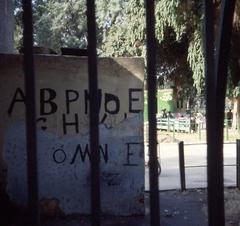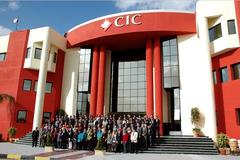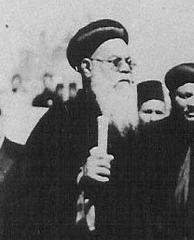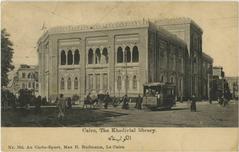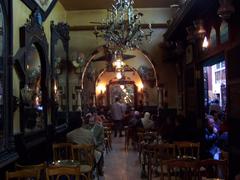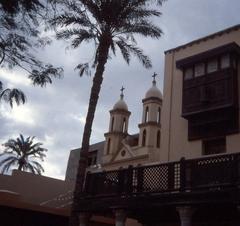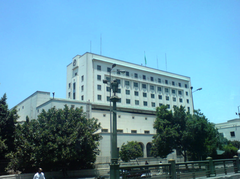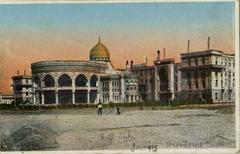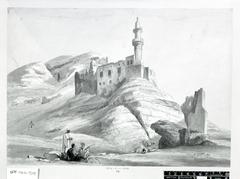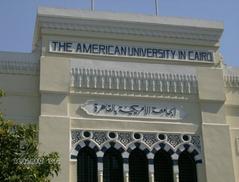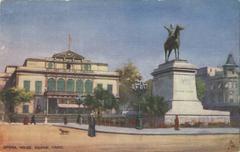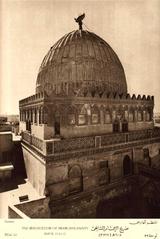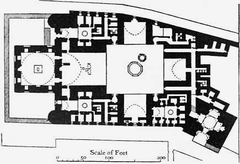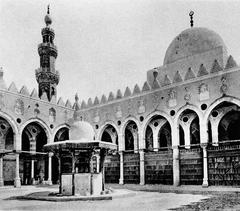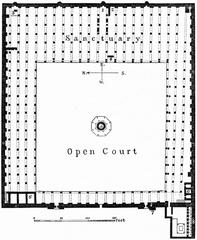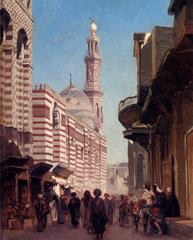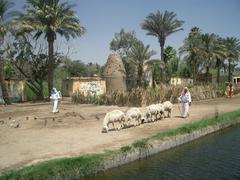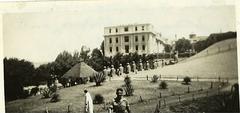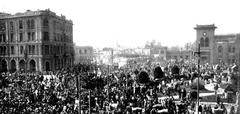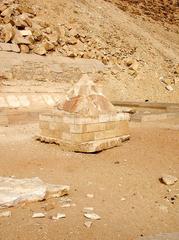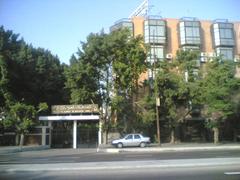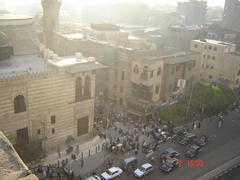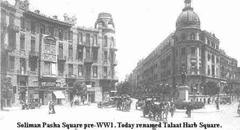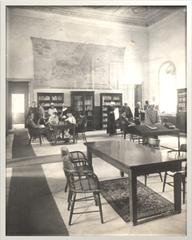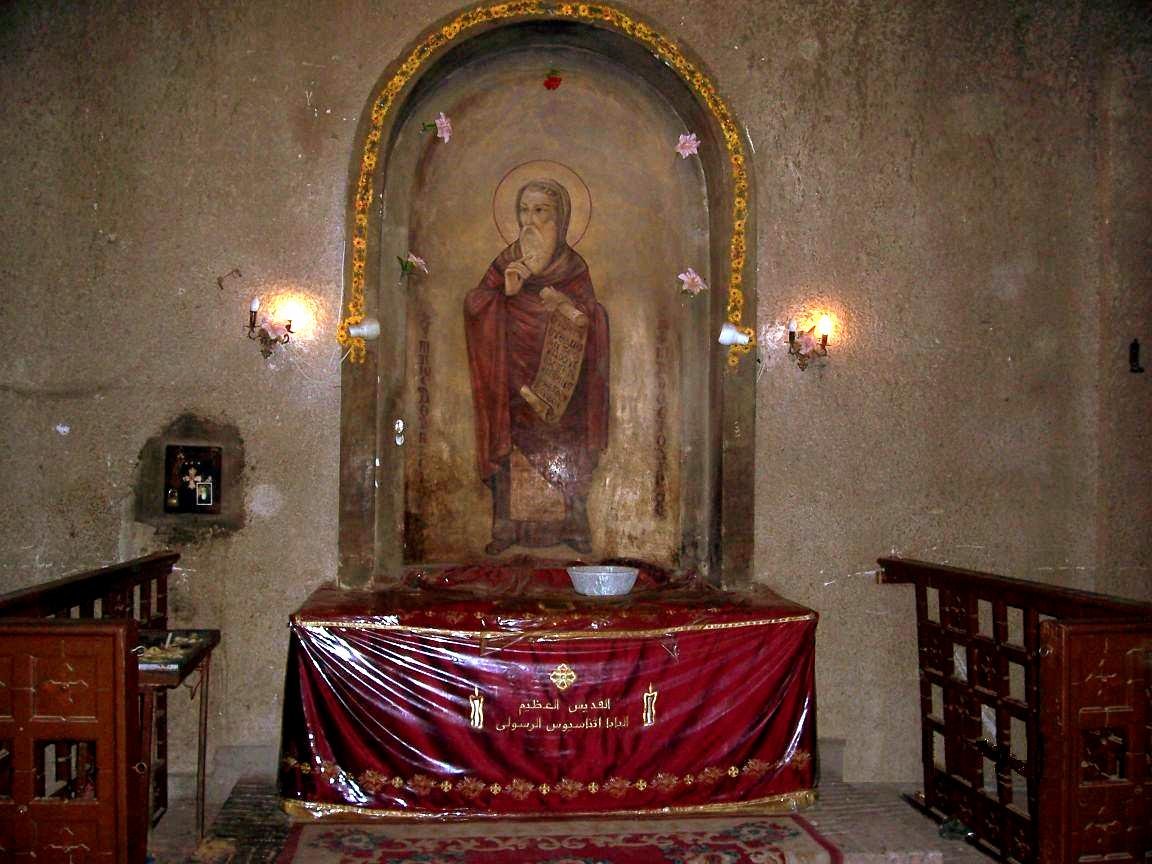
Saint Mark’s Coptic Orthodox Cathedral Visiting Hours, Tickets, and Cairo Historical Sites Guide
Date: 14/06/2025
Introduction
Saint Mark’s Coptic Orthodox Cathedral in Cairo stands as a monumental symbol of faith, history, and culture. As the spiritual heart of the Coptic Orthodox Church—the largest Christian denomination in Egypt and the Middle East—it traces its legacy to Saint Mark the Evangelist, who is credited with introducing Christianity to Egypt around AD 42. The cathedral’s presence in Cairo’s Abbassia district reflects centuries of religious tradition and resilience, making it a beacon for Copts and a significant landmark for Egypt’s religious diversity (Egypt Insights; Cairo Observer; ArabMLS).
Built between the late 1960s and early 1970s, Saint Mark’s Cathedral was inaugurated in 1968 to accommodate the growing Coptic population. Distinguished by its harmonious blend of traditional Coptic motifs and modern architectural elements, the cathedral can host up to 5,000 worshippers. Its expansive design, historic relics, and vibrant iconography make it both a place of worship and a center of cultural preservation (Watani International; travelhackfun.com; ETL Travel).
The cathedral is deeply revered as it houses the relics of Saint Mark, returned from Venice in a pivotal ecumenical gesture in 1968. As a pilgrimage site, the cathedral also plays a vital role in fostering interfaith dialogue and strengthening Coptic identity within the Egyptian social and political landscape (Cairo Observer; islamicvoice.com).
Today, the cathedral welcomes visitors daily, offering free admission and facilities for those with mobility challenges. Its proximity to other major Coptic and historical sites in Cairo makes it an essential destination for understanding Egypt’s religious and cultural heritage (Evendo; TripHobo). This guide offers a comprehensive overview of the cathedral’s origins, architectural marvels, visitor information, and tips for a respectful and rewarding visit.
Table of Contents
- Origins of the Coptic Orthodox Church and Saint Mark’s Legacy
- Historical Significance of the Cathedral’s Location
- Construction and Architectural Evolution
- The Relics of Saint Mark and Ecumenical Importance
- The Cathedral as the Seat of the Coptic Papacy
- Social and Political Context
- Notable Features and Artistic Heritage
- Visiting Saint Mark’s Cathedral: Hours, Tickets, and Tips
- Architectural Highlights and Visitor Experience
- Nearby Attractions in Cairo
- Frequently Asked Questions (FAQ)
- Visitor Etiquette and Accessibility
- References and Further Reading
Origins of the Coptic Orthodox Church and Saint Mark’s Legacy
According to tradition, Saint Mark the Evangelist—author of the second Gospel—arrived in Alexandria around AD 42, founding the Coptic Orthodox Church and serving as its first bishop (Egypt Insights). His missionary work established one of the world’s oldest Christian communities and left a profound legacy. The Coptic Church’s apostolic succession, resilience through centuries of adversity, and its renowned School of Alexandria have shaped Egypt’s religious and cultural fabric.
Historical Significance of the Cathedral’s Location
Saint Mark’s Cathedral is located in the Abbassia district, which became home to the Coptic community after land was granted in 969 AD as compensation for property lost during Cairo’s founding (Cairo Observer). Abbassia evolved into a central district in modern Cairo, reflecting both the city’s growth and the Copts’ enduring presence (ArabMLS).
Construction and Architectural Evolution
The cathedral was constructed between 1965 and 1968, designed by Coptic architects Awad Kamel and Selim Kamel Fahmy, with engineering by Michel Bakhoum (Watani International). Its modern basilica layout, soaring domes, and use of reinforced concrete create a monumental yet accessible space for worship. The design integrates ancient Coptic motifs with contemporary techniques, serving both liturgical and administrative needs (ETL Travel; Wikipedia).
The Relics of Saint Mark and Ecumenical Importance
A defining chapter in the cathedral’s history was the return of Saint Mark’s relics. Stolen in the ninth century and taken to Venice, a portion of these sacred remains was restored to the Coptic Church by Pope Paul VI in 1968 (Cairo Observer). The relics are now enshrined in a crypt beneath the main altar, symbolizing both the spiritual connection to the apostolic era and a milestone in ecumenical relations (ETL Travel).
The Cathedral as the Seat of the Coptic Papacy
Saint Mark’s Cathedral is the official seat of the Coptic Orthodox Pope, currently Pope Tawadros II. It is the administrative and spiritual hub for millions of Copts in Egypt and abroad. The cathedral hosts major ecclesiastical events, such as papal enthronements, synods, and significant liturgical celebrations (ArabMLS; Cairo Observer).
Social and Political Context
The relocation of the papal seat from Old Cairo to Abbassia coincided with Egypt’s modernization in the 20th century, aligning with state development plans and urban expansion (Cairo Observer). The cathedral has played a role in state visits, interfaith dialogue, and national celebrations, emphasizing its importance as both a spiritual and civic landmark (ArabMLS).
Notable Features and Artistic Heritage
Saint Mark’s Cathedral is a showcase of Coptic artistry, with elaborate mosaics, stained glass, and more than 200 icons, including depictions of modern martyrs and saints (Watani International). Its marble iconostasis, vibrant frescoes, and the shrine of Saint Mark’s relics offer both spiritual inspiration and a visual chronicle of Coptic tradition (Youregypttours). The cathedral complex also houses a library, museum, and several chapels with deep historical roots.
Visiting Saint Mark’s Cathedral: Hours, Tickets, and Tips
- Visiting Hours: Open daily from 9:00 AM to 5:00 PM; hours may vary during major religious festivals (TripHobo; Evendo).
- Entry Fees: Admission is free; donations are appreciated.
- Guided Tours: Available via prior arrangement or local tour operators. Some tours are offered in English.
- Dress Code: Modest attire required—shoulders and knees covered. Women may choose to wear a scarf.
- Photography: Allowed in most areas; avoid flash during services and seek permission before photographing worshippers.
- Accessibility: Ramps and accessible entrances make the cathedral welcoming to those with mobility challenges.
- Facilities: Restrooms and limited parking available; security screening at the entrance.
Architectural Highlights and Visitor Experience
The cathedral’s basilica layout features a grand nave, side aisles, and a prominent dome symbolizing spiritual ascent. Iconography, mosaics, and stained glass enrich the interior, while the crypt beneath the altar houses Saint Mark’s relics—a focal point for pilgrims (ETL Travel; Wikipedia). Recent renovations have enhanced accessibility, lighting, and security.
Visitors are encouraged to attend a service or join a guided tour to appreciate the cathedral’s liturgical traditions and artistry. During major festivals, the cathedral becomes a vibrant hub for community and cultural celebrations.
Nearby Attractions in Cairo
Saint Mark’s Cathedral is ideally situated for combining visits to other historical sites:
- Coptic Museum: Houses ancient Christian artifacts and manuscripts.
- Hanging Church (Saint Virgin Mary’s Coptic Orthodox Church): One of the oldest churches in Egypt.
- Ben Ezra Synagogue: A testament to Cairo’s religious diversity.
- Khan El Khalili Bazaar: For authentic Egyptian crafts and cuisine (travelhackfun.com).
Local eateries and cafés in Abbassia offer a taste of Egyptian culinary traditions after your visit.
Visitor Etiquette and Accessibility
- Maintain silence and reverence inside the cathedral.
- Silence mobile phones and avoid loud conversation.
- Notify staff if you need assistance; facilities for people with disabilities are available.
- Observe security protocols at the entrance.
Frequently Asked Questions (FAQ)
Q: What are the cathedral’s visiting hours?
A: Daily from 9:00 AM to 5:00 PM; hours may change during religious holidays.
Q: Is there an entrance fee?
A: No, entry is free. Donations are welcomed.
Q: Are guided tours available?
A: Yes, through local operators or by prior arrangement.
Q: What is the dress code?
A: Modest clothing covering shoulders and knees; headscarves for women are optional.
Q: Is the cathedral accessible for people with disabilities?
A: Yes, renovations have improved accessibility features.
Q: Can I take photographs inside?
A: Yes, in most areas, but avoid flash and respect worshippers’ privacy.
Visuals and Media
Alt text: Exterior view of Saint Mark’s Coptic Orthodox Cathedral in Cairo with its grand domes and entrance.
Alt text: Colorful stained glass windows illuminating the interior of Saint Mark’s Cathedral.
View map and directions to Saint Mark’s Cathedral
For more images and virtual tours, visit Evendo and TripHobo.
References and Further Reading
- Egypt Insights
- Cairo Observer
- ArabMLS
- TravelHackFun
- Islamic Voice
- Wikipedia
- Watani International
- ETL Travel
- Evendo
- TripHobo
- Egypt Tours Gate
- Cairo Top Tours
- Coptic Orthodox Church
- Official Coptic Orthodox Church website
Plan Your Visit
Saint Mark’s Coptic Orthodox Cathedral is more than a house of worship; it is a living testament to Egypt’s enduring Christian heritage, artistic achievements, and interfaith spirit. Whether you seek spiritual reflection, architectural inspiration, or cultural exploration, a visit to this cathedral is an essential chapter in any journey through Cairo’s rich history.
Download the Audiala app for guided tours, real-time updates, and further insights into Cairo’s historical treasures. For the latest information, refer to the official Coptic Orthodox Church website or local tourism resources.
